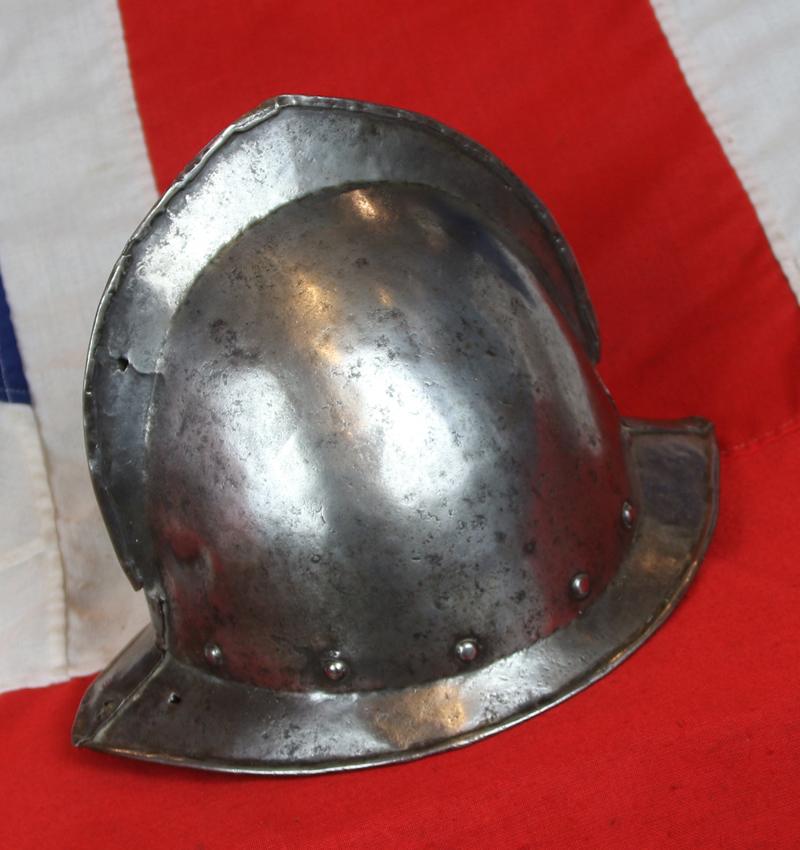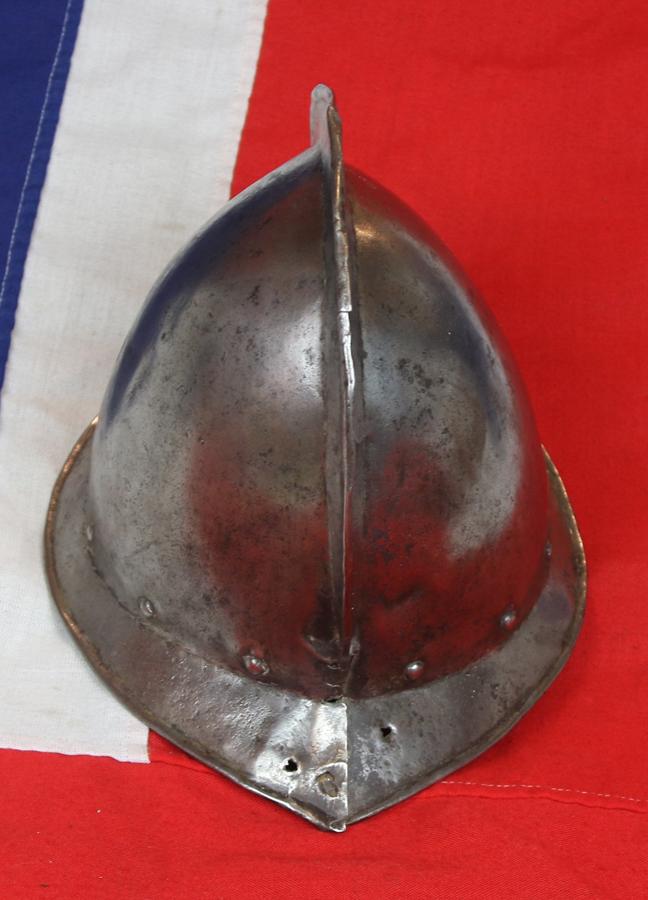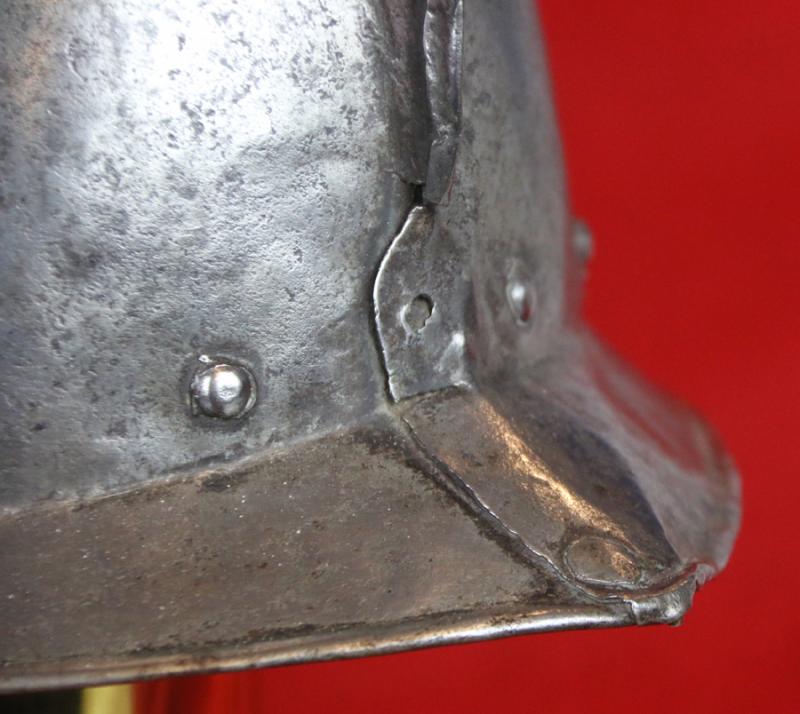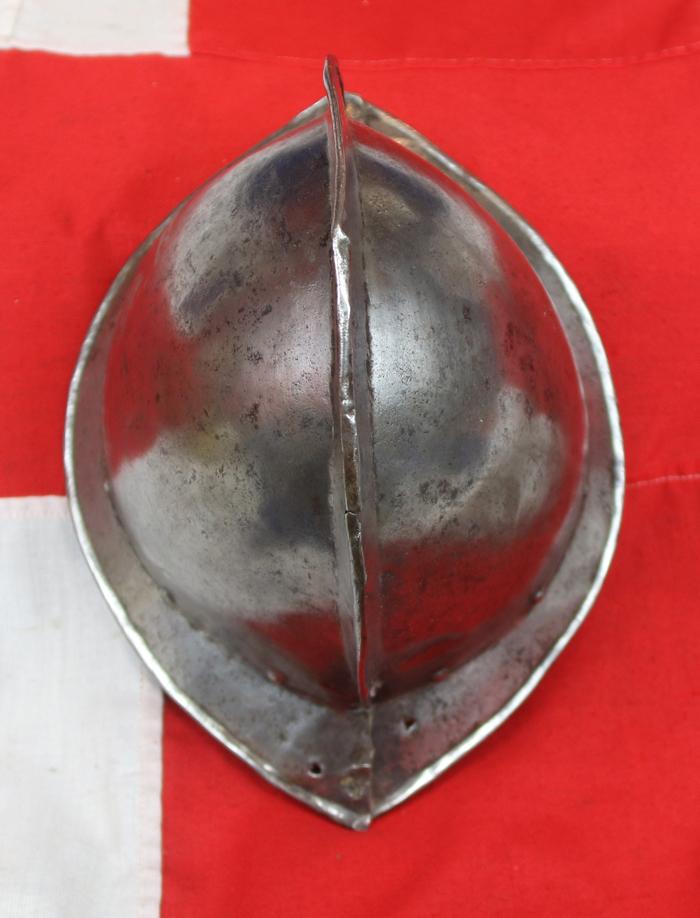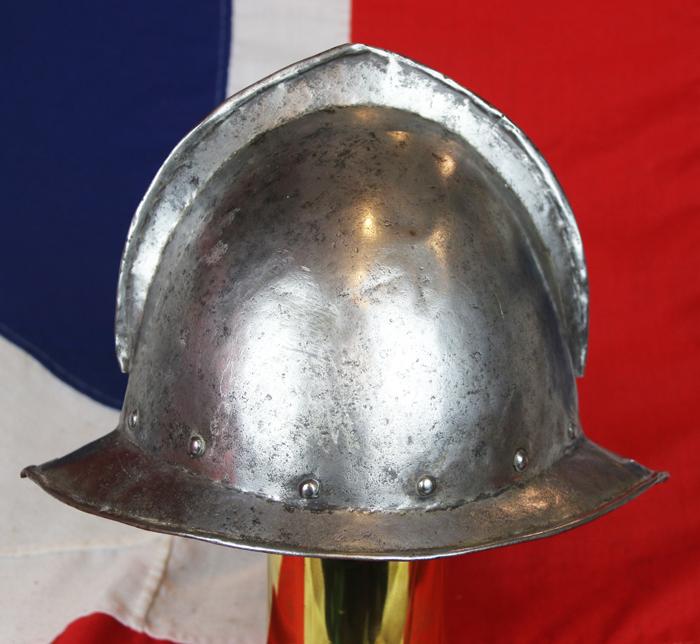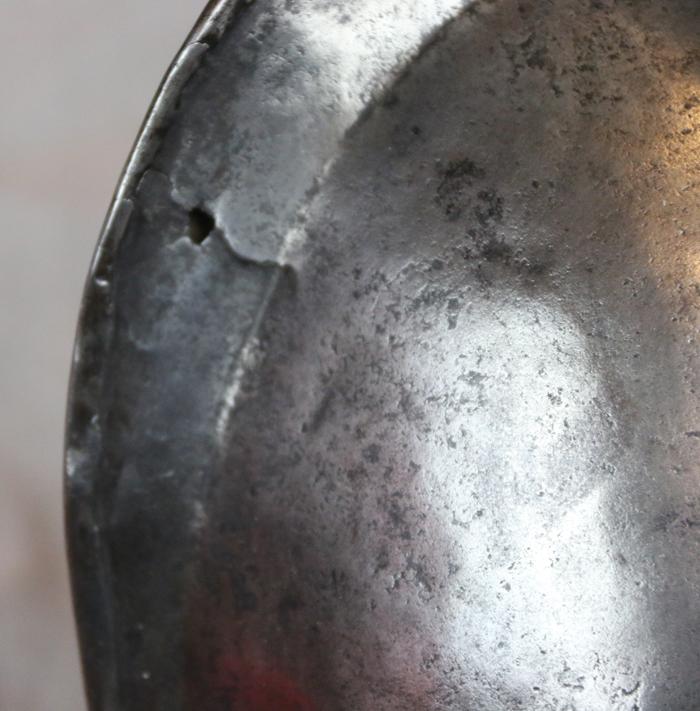A Most Scarce, Original, Early 17th Century English Civil War Infantry Musketeer's or Pikeman's Comb Morion Helmet. Used From The 30 Years War And Into The English Civil War.
Used as the pattern used by both musketeers and pikemen during both wars.
The musket soon became the dominant infantry weapon during the Civil War, likely due their ease at rapid deployment. Musketeers could move and react faster than the Pikeman in their heavy armour. They were easier to train and the musket could kill and maim the enemy up to 200 paces away. If you could keep your enemy at this distance you didn't have to close to hand to hand combat.
The role of musketeer is more technical than that of the pikeman. As a musketeer within the regiment, you will be using a replica period matchlock musket, and when appropriate, carrying a set of bandoliers, holding the required amount of gunpowder to fire it.
The pikeman of the English Civil War. A pike was a wooden pole up to 18 feet long with a sharp metal spike. Its name comes from the French piquer, meaning ‘pierce’. Although the pike evolved in the Middle Ages, pike blocks more closely resembled Ancient Greek phalanxes.
It was considered to be a more noble and traditional weapon than the musket – a weapon for gentlemen that needed strength, skill, and training to master and nerves of steel to fight with. Pike blocks could consist of up to 200 men and would form up in the centre of the line of battle; they could either protect musketeers from cavalry attack or be used as huge offensive infantry formations that would edge towards each other, their pikes levelled at ‘the charge’ before engaging in ‘push of pike’, where they would try and break the enemy’s formation.
At the beginning of the English Civil Wars, armies would have roughly one pikeman for every two musketeers. By the 1650s, this was closer to one to four or five and, as muskets became more effective and use of the bayonette became widespread, the pike become obsolete and the regular use of pikes ended with the beginning of the 18th Century.
Code: 24006
2250.00 GBP


